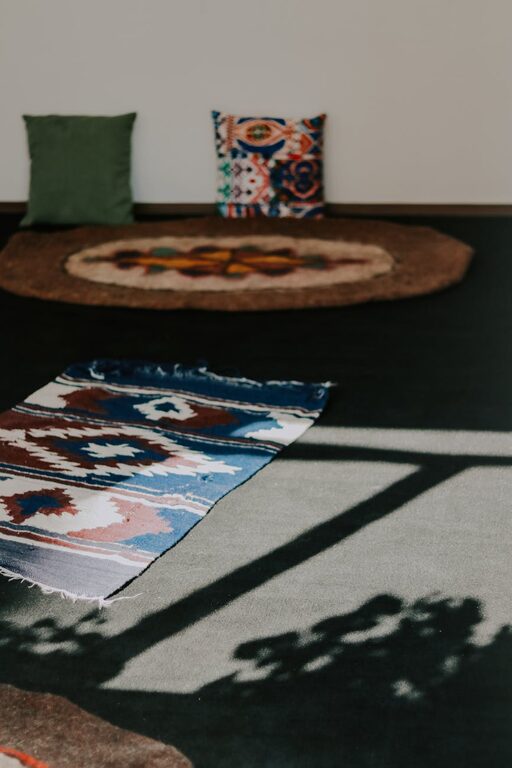Tips for Choosing Calm Colors to Create a Relaxing Home
Creating a soothing and peaceful atmosphere in your home starts with choosing the right colors. Calm colors have the power to transform your living space into a sanctuary where you can unwind and recharge. But with so many options available, how do you pick the best shades that promote relaxation? This guide will help you explore the art of selecting calm colors for your home, making it easier to achieve a serene environment.
Why Choose Calm Colors?
Calm colors are typically soft, muted tones that evoke tranquility and comfort. Unlike bright or intense colors that can energize or stimulate, calm colors help reduce stress and create a welcoming atmosphere.
Some benefits of incorporating calm colors include:
– Promoting better sleep and relaxation
– Encouraging peaceful conversations and connection
– Making rooms feel more spacious and airy
– Enhancing your overall mood and well-being
Understanding Color Psychology
Before selecting paint or decor colors, it helps to understand how different hues affect emotions:
– Blues: Often associated with calmness, serenity, and stability. Light blues can make a room feel restful and airy.
– Greens: Symbolize nature and balance, bringing a refreshing and peaceful vibe indoors.
– Neutrals: Soft beiges, creams, and greys provide a subtle backdrop that soothes without distraction.
– Lavenders and Soft Purples: Can offer a gentle, calming feeling without overpowering a space.
– Pale Pinks and Peaches: Bring warmth and softness while maintaining a relaxed atmosphere.
Tips for Choosing Calm Colors for Your Home
1. Consider Natural Light
The amount and quality of natural light in a room impact how colors appear. North-facing rooms tend to be cooler and might benefit from warmer calm tones like warm greys or soft peach, while south-facing rooms with abundant sunlight can handle cooler hues such as pale blue or soft green.
2. Start with a Neutral Base
Neutral colors are incredibly versatile and provide a calming backdrop for any living space. Starting with soft whites, light greys, or beige tones on walls allows you to add accent colors later without overwhelming the room.
3. Use the 60-30-10 Rule
To create balanced color harmony, apply this classic interior design principle:
– 60% is your main calm color (walls or large furniture)
– 30% is a secondary color with a similar tone (upholstery, rugs)
– 10% is an accent color, which can be a slightly deeper or contrasting calm tone (pillows, decor)
This method keeps the space interesting yet soothing.
4. Test Paint Samples
Always test paint colors in small patches on your walls before committing. Observe the colors at different times of the day and under artificial lighting. This helps you avoid surprises and find the hues that truly feel calm to you.
5. Embrace Textures and Natural Materials
Calm colors look even more inviting when paired with natural textures such as wood, linen, or cotton. These materials add warmth and depth, enhancing the tranquil effect of your chosen colors.
6. Limit Bright or Contrasting Colors
While small pops of brighter colors can add personality, too much contrast can disrupt calmness. Stick with muted or pastel versions of your favorite shades if you want to incorporate color variety.
7. Consider Color Flow Throughout Your Home
Since colors influence mood, it makes sense to maintain a color flow from room to room. Choose calm tones that complement each other to create a harmonious transition between spaces.
Popular Calm Color Palettes to Try
Here are a few calming combinations to inspire your home color choices:
Soft Blue and Light Grey
– Walls: Pale sky blue
– Trim and accents: Light grey
– Furnishings: White or cream
This palette evokes coastal serenity and freshness.
Sage Green and Warm Beige
– Walls: Muted sage green
– Trim: Off-white or warm beige
– Fabrics: Natural tones like linen and jute
The green brings nature indoors, while beige adds warmth.
Lavender and Soft White
– Walls: Light lavender or lilac
– Trim: Crisp white
– Decor accents: Silver or soft pink
Perfect for bedrooms or meditation spaces for a gentle relaxing vibe.
Warm Taupe and Dusty Rose
– Walls: Warm taupe or greige
– Accent wall or pillows: Dusty rose
– Furniture: Light wood finishes
A cozy and inviting palette balancing warmth and calmness.
Final Thoughts
Choosing calm colors for your home is a personal and rewarding process. Focus on what makes you feel relaxed and comfortable, and remember that good lighting and textures can enhance the effect of your chosen palette. By following these practical tips, you’ll be well on your way to creating a home that truly feels like a peaceful retreat.
Remember, calm colors do not mean dull or boring—they simply allow you to create spaces where serenity and comfort come first. Enjoy crafting your serene sanctuary!

